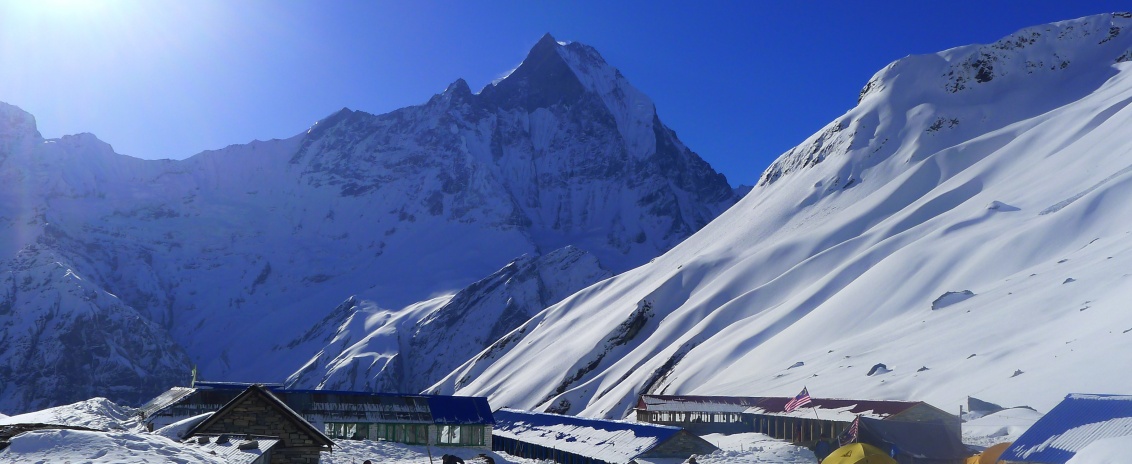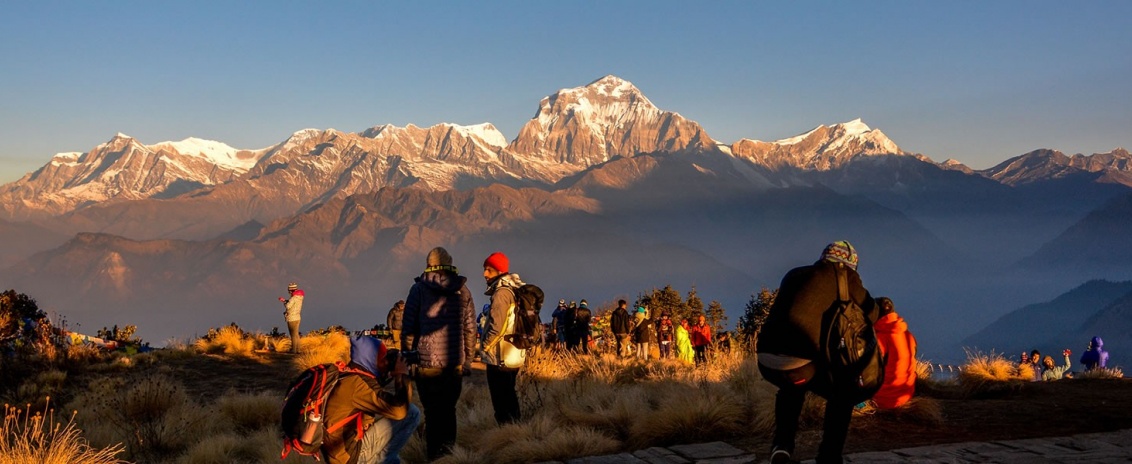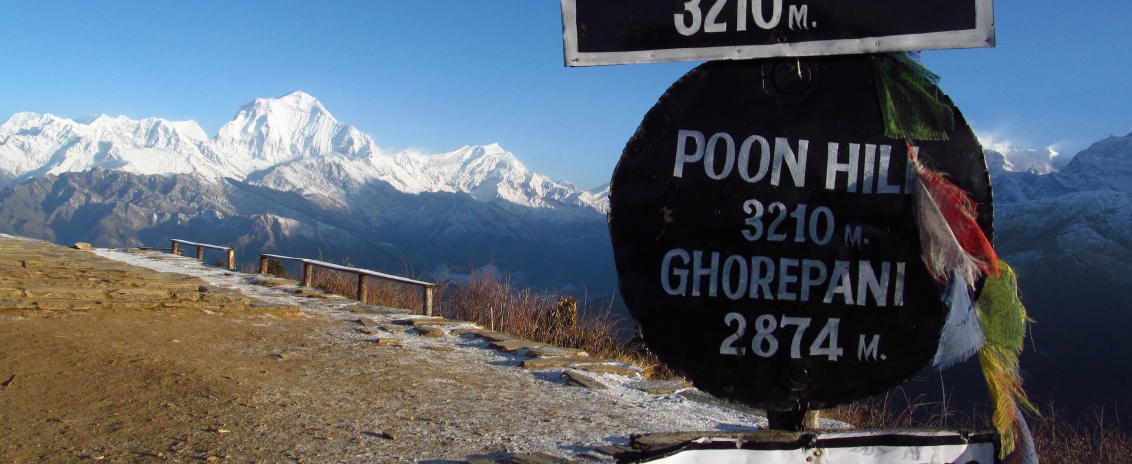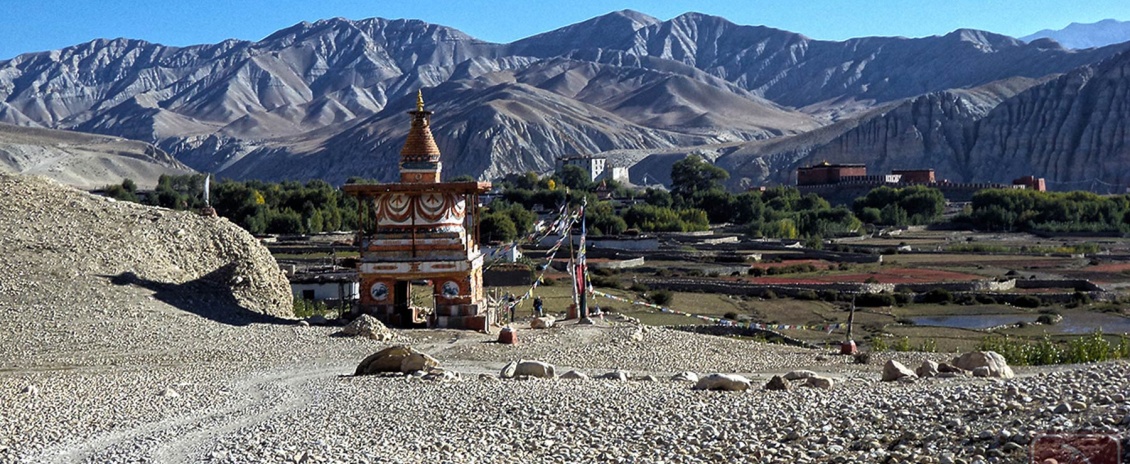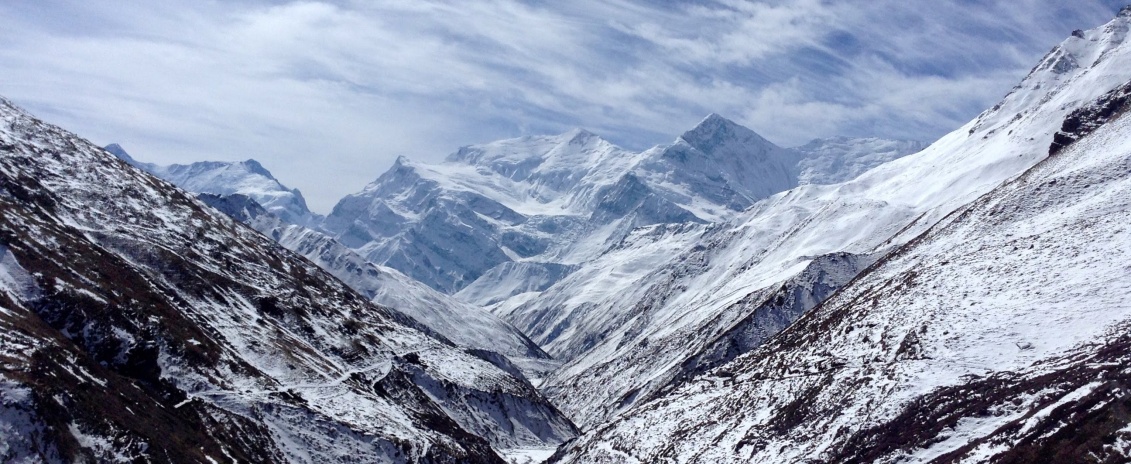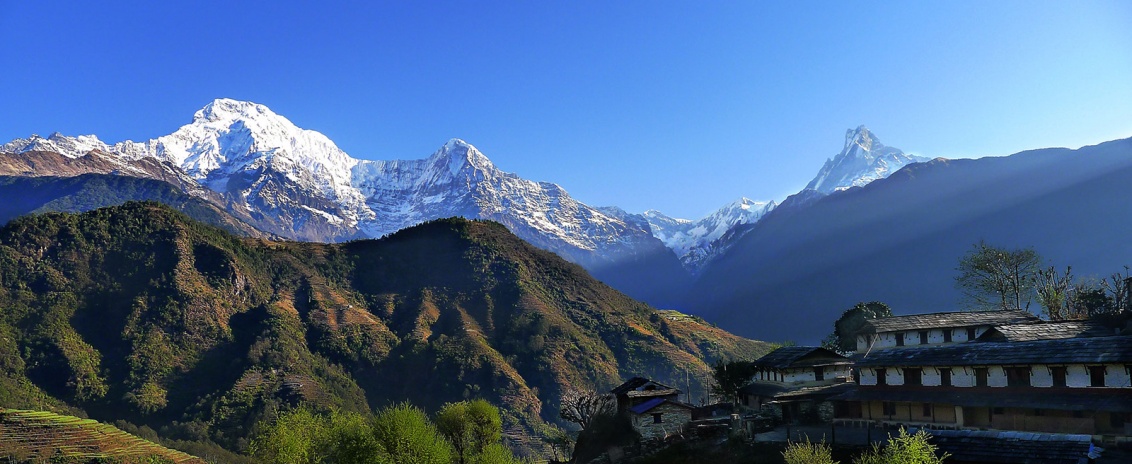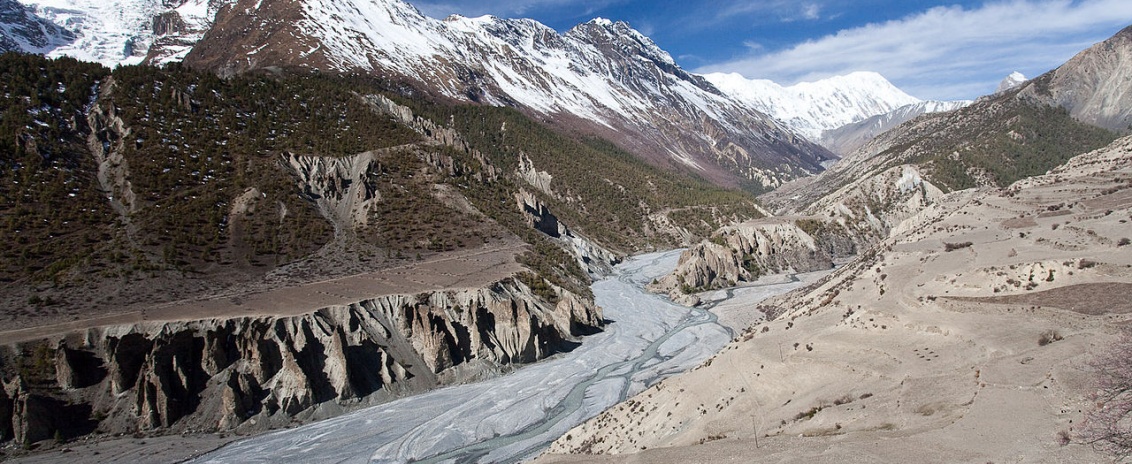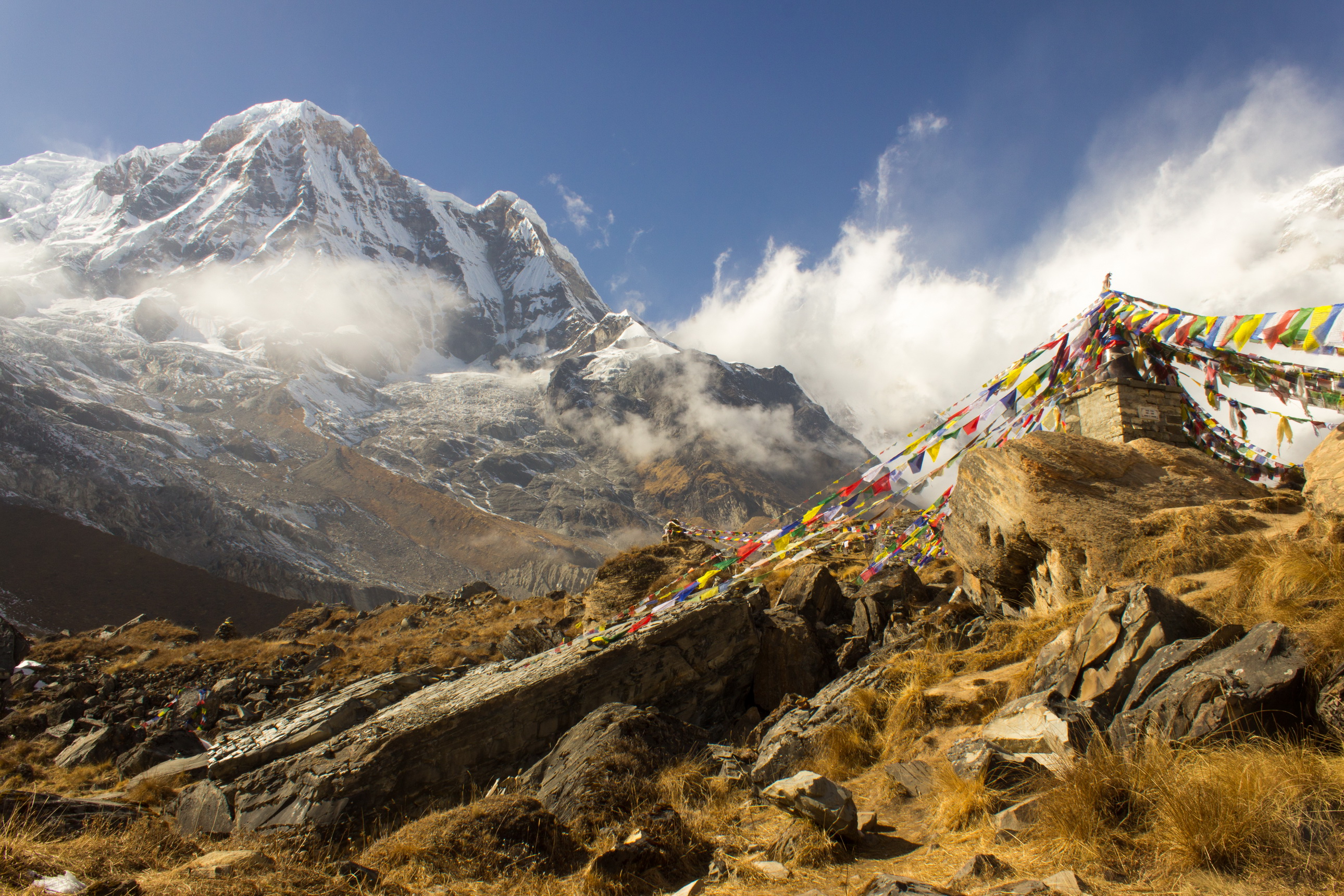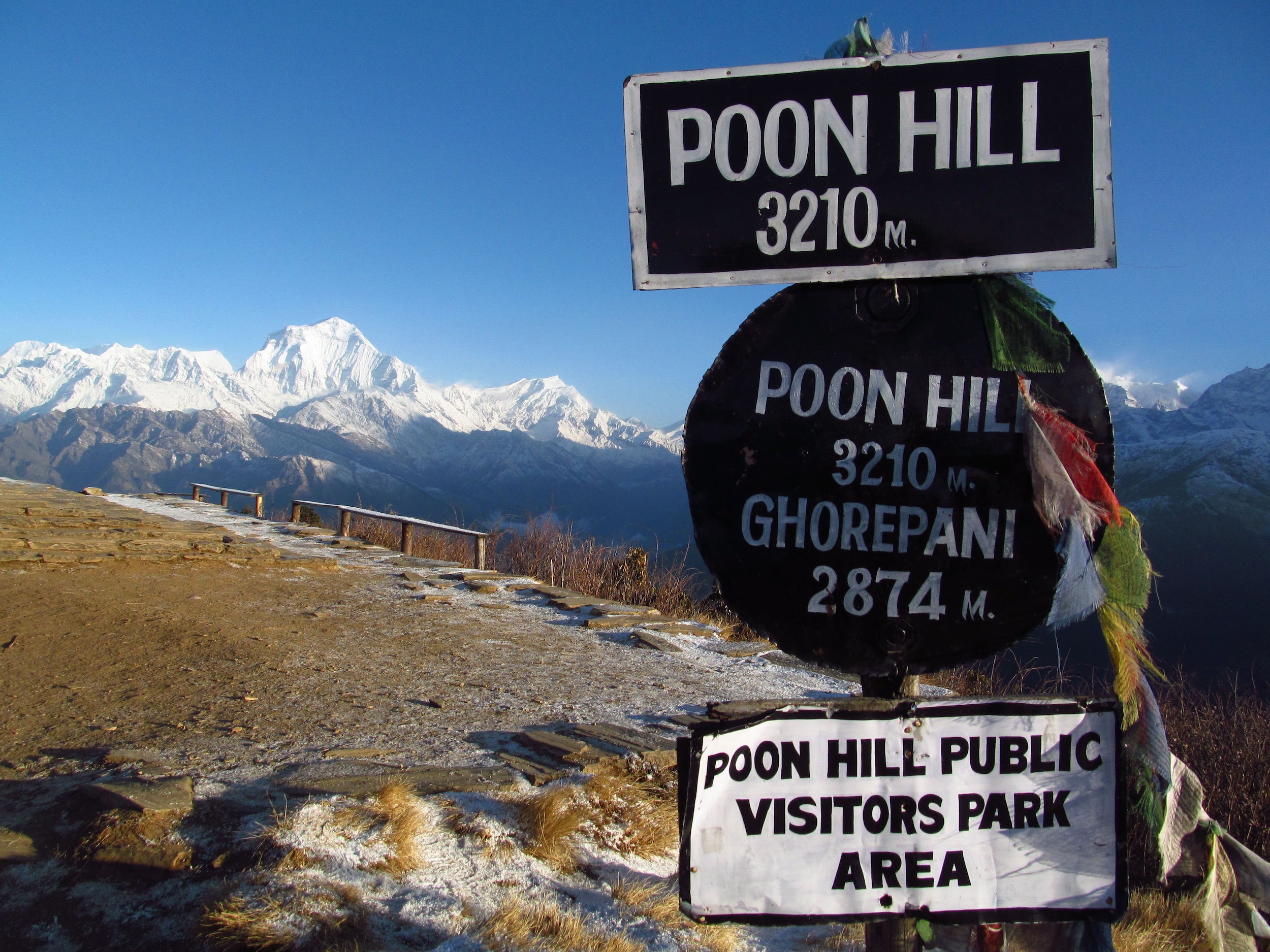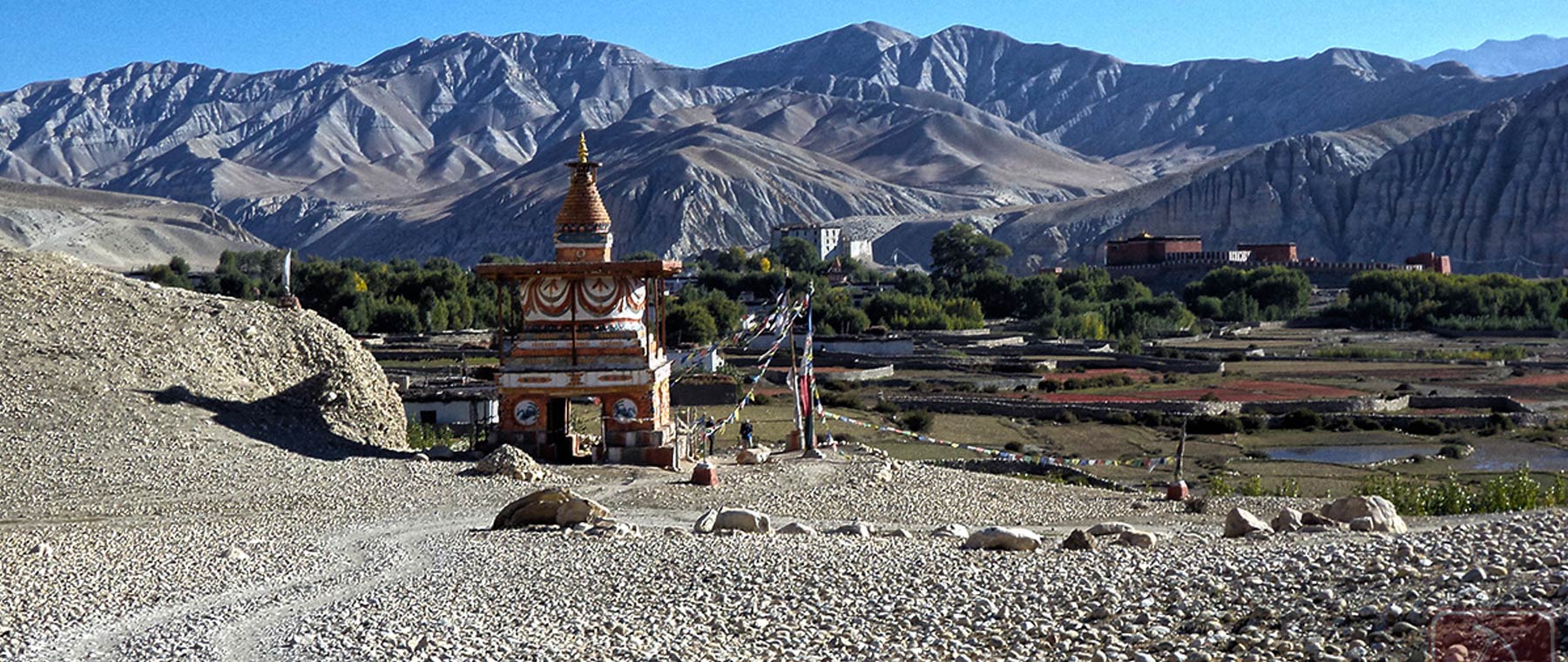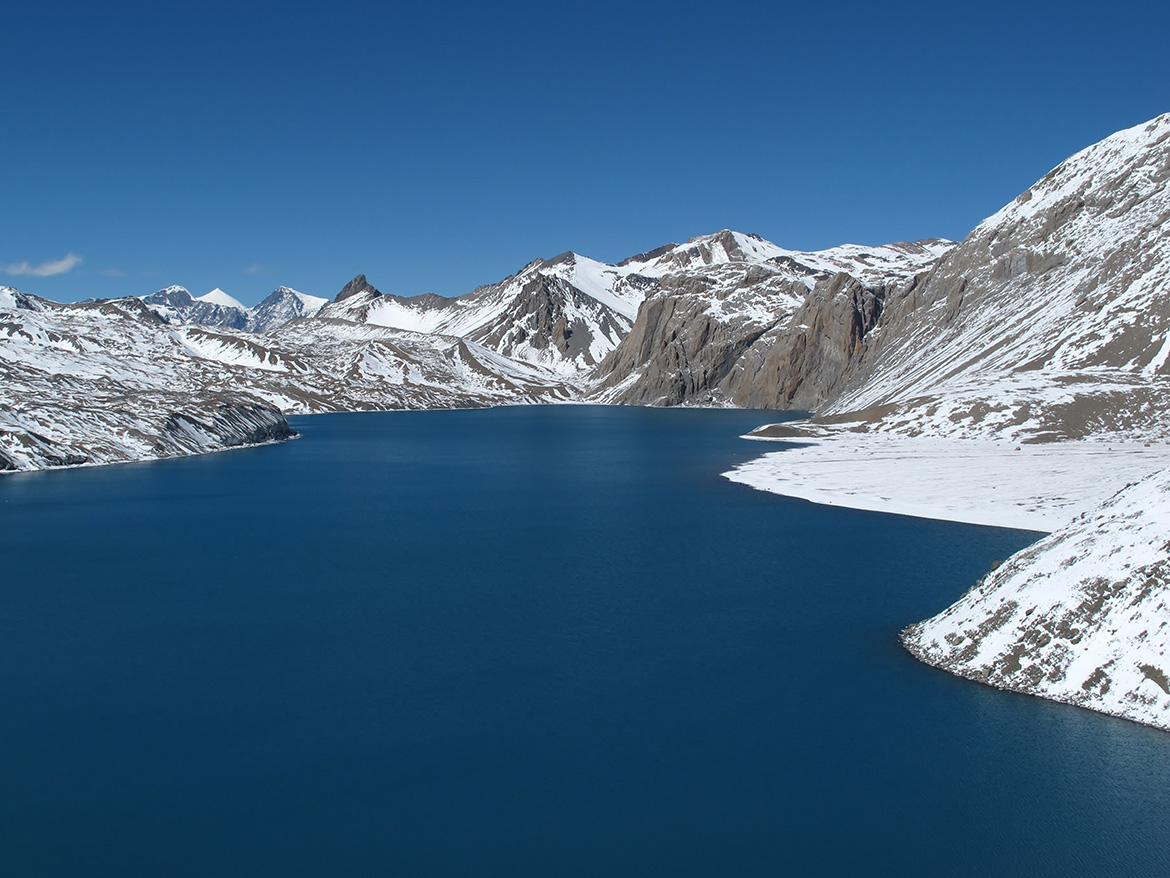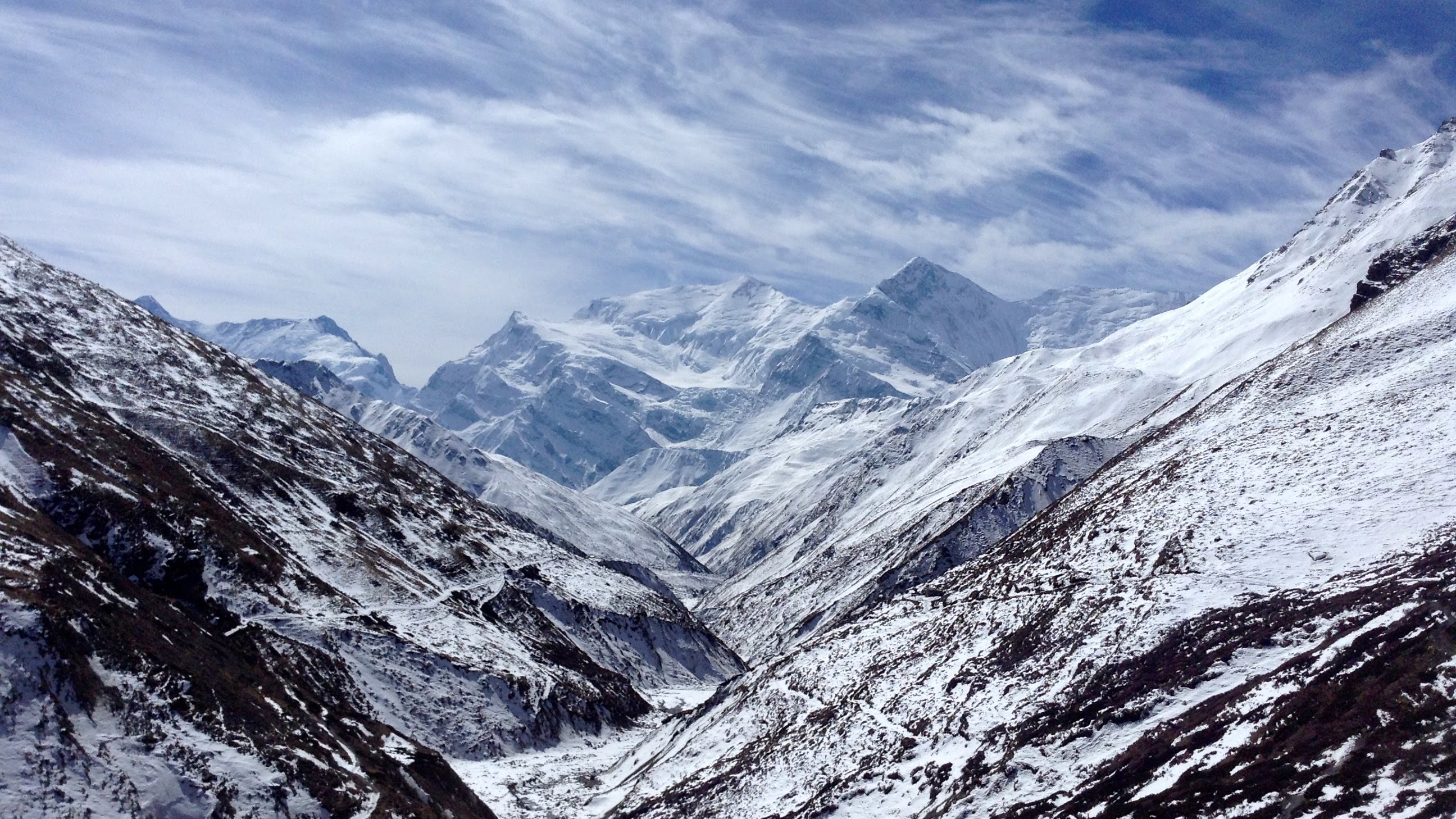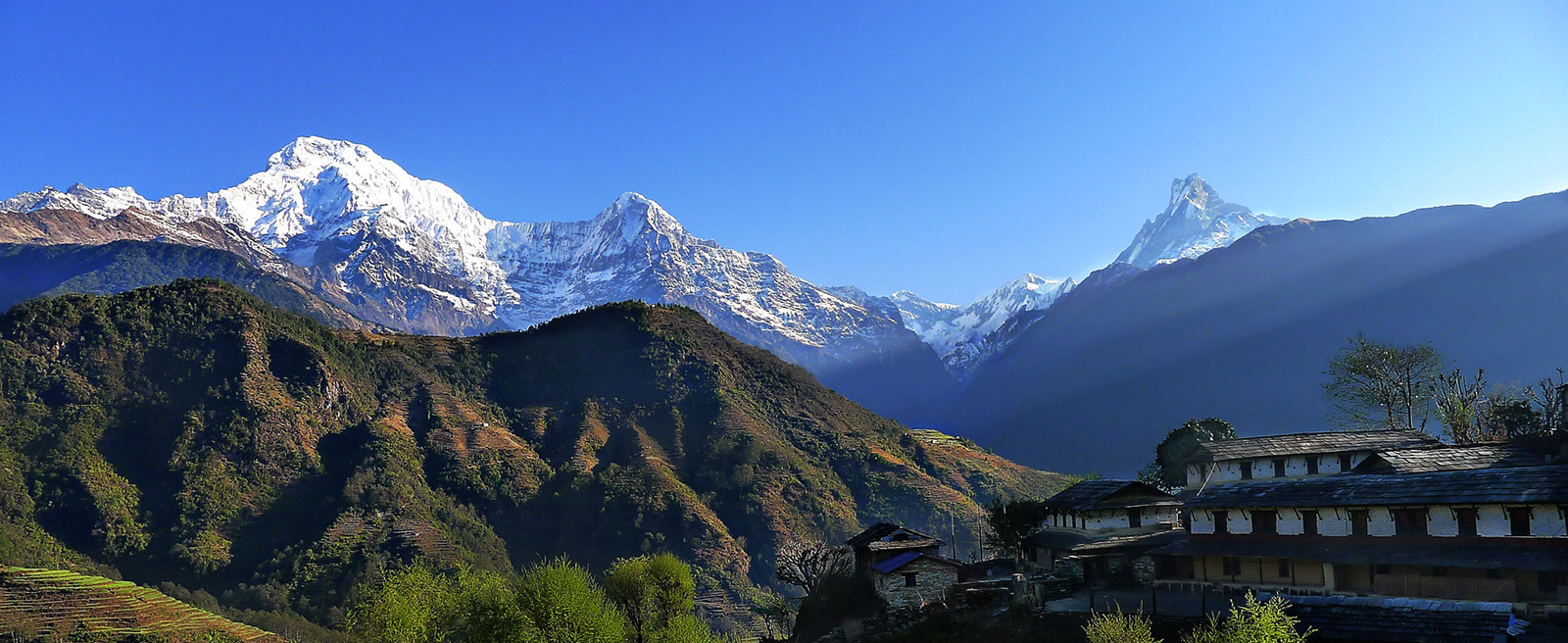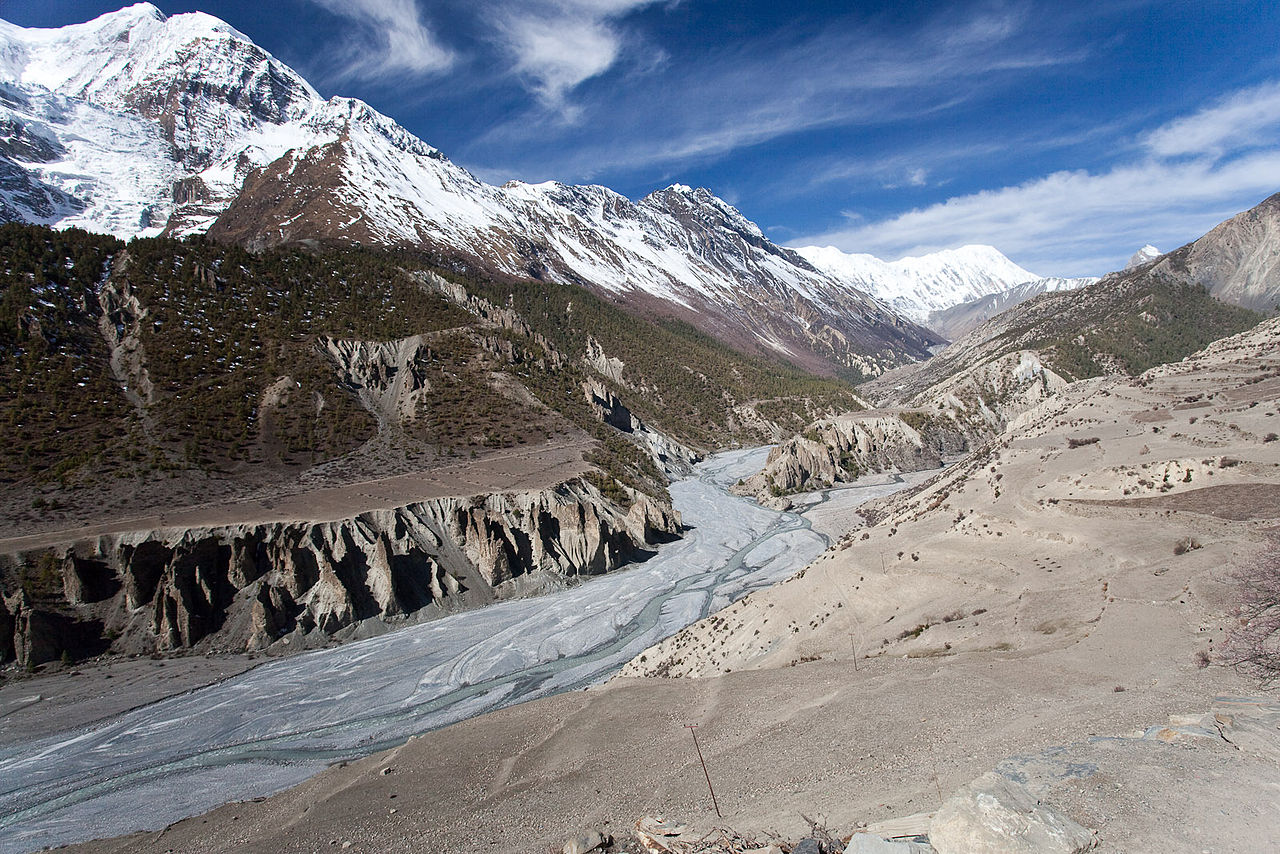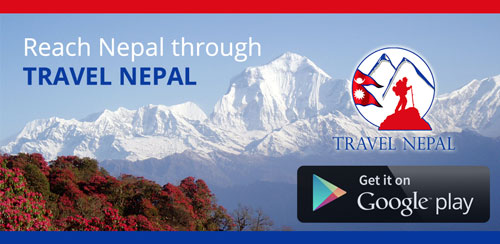Upper Mustang is one of the restricted area of Nepal. Mustang holds natural beauty , rich culture and undiscovered history. Upper Mustang especially is said to have many archaeological evidences of primitive age . However, some part of it has been successfully excavated while larger portions still waits for excavations. Apart from this Upper Mustang is also a center for the exchange of Tibetan culture and Tibetan Buddhism. Upper Mustang has mind blowing landscape with a blend of deserted hills and snow-capped mountains.
Upper Mustang trek trail begins with a flight to Jomsom. You will enjoy this short flight as it offers wonderful views of mountains. Jomsom is quite a windy place. You will have to cover yourself with some windproof jacket. We will then head to Kagbeni, Chele, Syangbochen and other village while we will get to Lo Manthang finally on the 9th day of trekking. Lo Manthang is the capital of Kingdom Lo. Once upon a time there was a Kingdom of Lo. Although, there was Kathmandu as capital, Mustang had it's capital as Lo Manthnag and people called this Kingdom of Lo. However, due to many political issues today there is no Kingdom of Lo and is addressed as Mustang only. Similarly, our trails passes through village of Damkar, Ghilling Chuksang and then to Jomsom again. At Jomsom we will take a flight to Pokhara and officially end our trekking at Pokhara.
Cost Includes:
11 night accommodation with 3 meals a day during trek
3 night accommodation in Kathmandu on Bb plan
2 night accommodation in Pokhara on Bb plan
Licensed Guide and Porter
All transfer; airport drop pick up
Round trip fare Kathmandu - Pokhara
Round trip air fare Pokhara - Jomsom
Farewell Lunch or Dinner
All government taxes
DAY 01: Kathmandu
Arrival
Welcome to Nepal. First day you’re in Nepal. Our
representative will be at the airport to receive you and transfer to Hotel. Our
manager will meet you at hotel or where convenient and brief you about the trek
along with introduction to guide of the trek. Overnight at Hotel on B plan
DAY 02: Kathmandu
We stay in Kathmandu and prepare equipment and things for
the upcoming adventure. Besides preparation, you can go for a day sightseeing
.Before noon our guide will take you to visit the Swayambhunath temple, a Buddhist
stupa with a 2000-year history that rises on a hill and opens a fascinating
view of the city of Kathmandu. After lunch, you’ll visit Kathmandu Durbar
Square and Patan Durbar Square. Both of these palace complexes once were
residence of Kings of Nepal of the Malla and Shah dynasty. After a full day
sightseeing you’ll be transferred to Hotel. Our representative will brief you
about the trekking.
DAY 03: Kathmandu to Pokhara (823 m)
Early in the morning, around 7 am, on the tourist bus we
will leave for Pokhara. Along the way, we will be able to see the countryside
of Nepal with its green fields, rivers, villages, farms and amazing mountain
scenery. We will arrive in Pokhara after lunch. Pokhara offers a wonderful view
of Dhalaugiri, Manaslu, Machapuchhre, the five summits of Annapurna and other
mountains. Pokhara is called the "city of lakes", with a high number
of beautiful lakes. After lunch, we will be able to see one of the most
beautiful and accessible lake - Fewa, and enjoy boating. Explore, relax and
enjoy food on the shores of the transparent Lake Fewa. In the evening, you can
walk around the lakeside area and enjoy nightlife of this beautiful city.
Overnight in Pokhara
DAY 04: Flight to Jomsom
and trek to Kagbeni (2,858 m)
After early breakfast, we will go to the airport to board
the morning flight to Jomsom. You will
see breathtaking views of
Annapurna and Dhalaugiri in 30mins flight (appx). Our flight will land at
Jomsom, Mustang's regional center. It is a fairly large city, as well as the
most important settlement in the Kaligandaki district that connects the ancient
Trans-Himalayan salt trade route with Tibet. Starting from Jomsom, get ready
for the gusty, afternoon winds. We will continue our journey (3 hours) along
the river bed of Kaligandaki and reach the village of Eklibhatti. After a good
rest, an easy transition will take us to Kagbeni, which is located on the banks
of two rivers. Kagbeni is a very interesting, wind-dried village, which lies
along the historic salt trade route to Tibet, through the region of the Upper
Mustang. Overnight at Kagbeni
DAY 05: Kagbeni to Chele (3,050 m)
Our trip will begin at a checkpoint for permit checking
and continue upstream along the Kaligandaki River. During the trek along the
sandy and windy trails, we will stop in a picturesque place. This path involves
ups and downs. First, we'll get to the Tangbe settlement with its narrow alleys
between whitewashed houses, buckwheat, barley and wheat fields, and apple
orchards. From there, we will go to Chhusang and, crossing the river, we will
get to the whole piece of red clay, fallen from the rock and creating a tunnel
through which flows the river Kaligandaki. Today's destination of our trip will be a small mountain range above the village of
Chele.
DAY 06: Chele to Syangbochen (3,475 m)
On the plateaus and narrow isthmuses, we climb the Taklam La
Pass (3,624m / 11,923 ft.), from where the top of Tilicho, Yakawa Kang and
Damodar Danda are clearly visible. Then, go down to the settlement of Samar. We
climb the path that goes over the village of Samar to the mountain ranges, and
then makes a steep descent down to the source. Another three hours of the same transition
will lead us to Syangbochen. Along the way, we can rest around a cool spring,
surrounded by juniper thickets. Before beginning any business, locals use dry
sheets of juniper as an offering to deities. We will pass by a cave known as
Ramchung Cave, where we can conduct a joint meditation.
DAY 07: Syangbochen to Ghami (3,520 m)
After breakfast, passing a few tea houses, chortens and
local villages with houses in Tibetan style, with an open veranda, we will
begin the ascent to Yamda La (3,850m / 12,667ft). We will cross a few gorges,
poplar alley and barley fields. Climbing Nyi Pass (4,010m / 13,193ft) will take
a little longer. Then, we'll go down to the place of spending the night in Ghami,
the third largest village in the Lo region. Ghami is surrounded by vast fields,
most of which are abandoned.
DAY 08: Ghami to Tsarang (3,500 m)
We will start the journey with a pleasant walk, just after
breakfast. After going through Ghami Khola, the path will lead us to the
plateau, and then continue along the long wall of Mani, the sacred stone wall
that was built by the followers of Buddhism. At the end of the wall, our way
will turn east to the village of Tsarang, which lies directly above the canyon
of Tsarang Chu - with its beautiful fields, willows and houses, separated by
stone walls. On the way to the guest house, in which we will spend the night,
we will see also the white dzong and the red gompa.
DAY 09: Tsarang to Lo-Manthang (3,700 m)
Today we will go to Lo Manthang with its magical views of
the peaks of Nilgiri, Tilicho, Annapurna and Brikuti. First, the trail will
descend to the canyon of Tsarang Chu, and then make a steep climb across the
river. After that, we effortlessly continue climbing the windy Isthmus of Lo
(3,850m), from where you can see the Lo-Manthang Valley. Going down to
Lo-Manthang, our gaze will open stone city walls and hills bordering Tibet. Overnight
at the hotel
DAY 10: A tour of
Lo-Manthang
Today we will visit local attractions. We will go to Gompe
Namgyal and Tinghar. Gampa Namgyal is located on a hill and is used as a local
monastery and courthouse. After visiting the Namgyal Gompa, we will head to
Tinghar, the last of the main villages around Lo Manthang. And then, back to
the hotel. Another possible option for you is a visit to Champa Lakhang
"Houses of the Gods", the red Thugchen Gompa, Chodi Gompa and the
Main Entrance, which are considered the main sights of this city. Another place
to visit is the four-story Royal Palace, surrounded by scenic views of the
Himalayas.
DAY 11: Lo-Manthang to Dhakmar (3,810 m)
Returning from Lo Manthang, you will choose another route: a
trip to Dhakmar, through Gyakar, visited more than 1200 years ago created by
Ghar Gompa, whose main figure is guru Rinpoche. Gompa is also known for its
rock carvings. According to the legend, any desire, conceived in this Gompa,
will come true. We will explore the surrounding countryside. In connection with
the real possibility of sandy winds, this walk is best done in the morning.
DAY 12: Dhakmar to Ghiling (3,806 m)
Today, we will go to Ghiling. After all, the trip to the
next place for spending the night takes 5-6 hours. Upon arrival, and after
dinner, we will spend the day exploring the area. Forecasts promise sandy winds
after lunch, so we'll take a walk in the evening.
DAY 13: Ghiling to Chuksang (3,050 m)
We will head towards Chuksang, where we will spend the
night. During the trek, you can enjoy the beautiful views of the Himalayas.
Enjoy the passage and a pleasant evening in the guest house.
DAY 14: Chuksang to Jomsom (2,700 m)
This day will be long, and therefore we will start the
transition in the morning and will be heading towards Kagbeni. We will finish
the hike along the high-mountain paths of the Mustang and continue along the
normal Annapurna circuit path. After lunch in Kagbeni, we will continue to
Jomsom, where we will spend the night. Or, if you want to spend another day,
our guide will take us to Muktinath.
DAY 15: Flight to
Pokhara
After breakfast, we will head to the airport and fly to
Pokhara. The flight will be amazing - we will fly over the mountain range of
two great mountains, Annapurna and Dhaulagiri. Arriving in Pokhara, guide will
take us to the hotel on the shore of the lake. The remaining time, we can walk
along the lake and relax in the hotel.
DAY 16: Transfer from Pokhara to Kathmandu
Immediately after breakfast we will go to a 200-kilometer
drive to Kathmandu. It is better to sit on the left - then you can enjoy the
views along the way. Upon arrival in Kathmandu, we will head to the hotel. We
did everything, so you can spend your time quietly, exchanging e-mail addresses
and photos with the rest of the group. Evening can be spent in a relaxed
atmosphere - perhaps, go for the latest purchases. And then, together with the
whole team of Nep Travels will provide you a farewell dinner or lunch. Overnight
in Kathmandu
DAY 17: Departure
Say goodbye to the mountains, because your journey through
Nepal has come to an end! We hope that you liked the trip organized by us, and
we are sure that you will return to the Himalayas! Approximately 3 hours before
the departure of your aircraft, our representative will take you to the
airport. On the way home, you have enough time to plan your next adventure in
the wonderful country of Nepal.
Cost Excludes:
Visa Fee (free for Indian, Chinese and SAARC nationalities except for Afghans)
Lunch and Dinner in Kathmandu and Pokhara
Travel Insurance
Rental charge for sleeping bag and down jacket
Expenses during trek like charging electronic devices, WI-FI, hot shower, toilet paper rolls, mineral water, and other personal items
Tips to guide and porter
Travel Insurance:
About the travel insurance we suggest our guest to take those insurance which covers all emergency case or other travel related injury during your travel in Nepal. However, this is optional and it depends on your opinion. If you are buying any insurance you can buy which covers for a week or only for days you will be in Nepal.
There are many insurance companies, but we suggest you to get World Nomad. They have emergency evacuation even up to 6000m. But before you get it make sure you are covered for such evacuation. For those who already have insurance of other company, make sure if it covers travel insurance in Nepal and especially evacuation up to 6000m. Link for World Nomads is www.worldnomads.com
Cancellation and Refund:
Although it’s rare but sometimes we might cancel trip due to some internal problems, in such a case you will be refunded full amount of package. If guest wish to cancel trip then money will be refunded as following:
Cancelled one month before arrival full refund
Cancelled 15 days before arrival 75% refund of total cost
Cancelled one week before arrival 50% of total cost
Cancelled less than a week 25% refund of total cost
No Show No refund
Equipment and
Accessories
Trekking on the high altitude area there is some requirement
of equipment.
Sunglasses
Sunhat, cap or Scarf
Woolen hat
Head light and torches
Gloves
Thermals
Fleece
Comfortable trekking boots
Fleece pants
Jackets, down jacket
Sleeping bag rated to -20°C
Trekking poles
Trekking bag or Duffel bag
Water bottle
Sunscreen
Toiletries
Spare battery (if you have any to charge your electronic
devices on the way)
- Can I travel alone without guide, just with a porter?
Upper Mustang trekking is a restricted area trekking. So, there is a compulsory to take a guide with you. Though there are many solo travelers but they are facing many problems regarding permits and routes because this area has a very thin settlement where it is easier to get lost. If there is a guide to assist you, you don't have to worry about where to stay for a night; how to find your way, how do you arrange your everyday trip and how do you take care of yourself if there are any bad happenings. Moreover, mountains are not like city area where you will find many to communicate, In the mountain very few speak English, and we remind you not to believe anyone you meet on the way cause there are good and bad people everywhere.
- What age people can trek in the Mountains?
There is no limit in age unless you are below 18 yrs. old. Everyone can trek if their physical strength allows them. If there is kid interested, then he/she must be accompanied by his/her parent. For those above 18 don’t have any restriction. Before you choose any trekking destination consult with your physician and then go for that which you can complete.
- How long is the trekking? How long will be the walking trail?
Trekking depends on the kind of package you choose. There are packages of a week and even of 3 weeks and more. When you are trekking average hour you will trek is four to six hours, in some cases 7 hours a day, which will be minimum of 7km and maximum 15 km of walking in a day.
- Is it compulsory to have previous trekking history?
No, if this is your first time then it's OK. Not all the trekkers have previous experience. There are many beginners who do well than those experienced ones. Before you come to Nepal indulge yourself in some walking or stamina building sports, so that it becomes easier for you to even walk for 6 hours a day.
- What things do I need to prepare before coming to Nepal?
Documents:
You will require documents like passport, color copies of passport, passport size photo graphs, if you are below 18 and travelling with friends, you will require a written document by your parents (travel agreement), if you are going under medication, written prescription by doctor is required. Besides these, if there are any other compulsory documents we will inform you during booking. For any other information you can check our travel essentials where information about Customs, Visa and Travel tips is given.
Equipment:
You will require that equipment which is listed in Equipment list. Please check there. You are free to carry other item if you need even if not mentioned in the list.
Travel Insurance:
Apart from this, most important thing you will require is Travel insurance. As, we've said it's optional but it’s better if you have one. There are many insurance companies, but we suggest you to get World Nomad. They have emergency evacuation even up to 6000m. But before you get it make sure you are covered for such evacuation. For those who already have insurance of other company, make sure if it covers travel insurance in Nepal and especially evacuation up to 6000m. Link for World Nomads is www.worldnomads.com
- What permits are required and who will arrange it for us?
For every trekking, either short or long you will require permits. For all trekking region you will require TIMS (Trekker's Information Management System). We will get it for you and you should prepare a photograph for it. Another is National Park permit. For every trekking region which falls under national park or conservation area, you will require permit. Another is for trekking in restricted area like Upper Mustang and Upper Dolpo where you will need a special permit which will be given for a week or limited days. If permit gets expired you will have to pay extra per day.
- When should I travel to Nepal?
Nepal has two tourist seasons one is spring and other is autumn. Spring season is February to May. Autumn is late August till mid-November. Summer in Nepal receives heavy rainfall which makes trails slippery and dangerous. There are many avalanches in Mountain during this time, so we suggest not to travel during summer. Another is winter; winter in mountains is too cold. Temperature drop to -20°C. There is snowfall and due to bad weather flights even get cancelled for 1 week. So, it’s better not to travel in winter as well.
- What sort of accommodation and food will be in mountain?
Everything in the mountain will be basic. You will stay in tea houses which is lodges and small hotels in the trekking routes. Accommodation will be in twin sharing basis. You will be given three meals and a drink (coffee, hot chocolate, tea) a day. As you go up wards, you will be served simple food. We suggest you to order vegetarian food cause meat in mountains are not fresh and you may easily suffer from Diarrhea. Mineral water in mountain is expensive than city and it gets more expensive as you go upward. You can buy water purifying pills and drink water which is served in local hotel and lodges by purifying yourself.
- What do I need to pack?
This basically depends on which season of year you are traveling. If it is autumn then you should keep in mind that winter is approaching, so it will be cool. If it is spring then you should be aware it gets warmer day by day. Generally in all kind of trekking you will require, a down jacket, a warm fleece jacket, thermal underwear, trekking pants and shorts, trekking boots, a thermal sleeping bag, backpack, and camera. Carry light and few items as much as possible. Just make sure you have all the necessary equipment and clothes. Too much overpacking will trouble you in the end. If you are under medication, carry your medicine. If you want to bring something with yourself for the trek but you don't have it right now, we suggest you not to buy such things. Almost all the necessary gears can be easily bought or be rented at shops in Kathmandu.
- Is there any arrangement for single travelers?
Whether you are single or traveling with group, a long as you are traveling with Nep Travels, you will be given a guide. If you are single and want a porter, you have to pay extra $11 per day for a porter. If there is more than one person then, one porter will be provided automatically. Generally, we have porter in 2:1 ratio; two trekkers will have one porter.
- How much weight will porter carry?
In an average porter will carry 5kg to 15kg. We recommend you to carry bag of 10-15kg (max.) weight. Try to carry few items as possible. You have to carry your important stuffs by yourself like camera, passport, small day bag and other food (chocolates, energy drinks). Rest other will be carried by porter. So you will have two bags during trekking, one carried by porter another carried by yourself.
- What communication options exist while trekking?
Don't forget you are trekking in the remote areas. However, access to mobile and internet is expanding so you can communicate using local mobile card and internet. Many routes offer local VHF phones, while more remote trails, a satellite phone is the only option. Connections are interrupted frequently but it's still OK considering place you are traveling.
- What is Altitude sickness? What is acclimatization?
When you are trekking in mountain, as you go upwards oxygen in air decreases. Sometimes you might feel headache, vomiting and nausea followed by dizziness. So when you see these symptoms, you might be suffering from Altitude sickness. So, if you have any such symptoms immediately tell your guide. To avoid altitude sickness you will have to take rest and let your body adjust to the surrounding which is called Acclimatization. If you feel too difficult even after acclimatization the best option is to descend rather than to wait for any rescue.
- What to do in emergency cases and injuries?
If there is small injury or accident, then our guide will provide you with first aid. All our guides have received first aid training so this will not be a serious matter. However, your safety comes first. If there is any big accident, then we will take you to nearby hospital. If there is case of emergency than we will immediately contact your insurance and you will be rescued by a helicopter.
- How will the case of incomplete trip be handled?
There is rare chance of incomplete trip. However, if there is such incident then we are sorry and please understand we cannot refund you money that you've paid. All the arrangements are done before your arrival, so we have to pay in advance for hotels, lodges, guide and porter. Permit and TIMS once used cannot be refund, so we will not be able to refund your money. If due to climate reasons or our technical problem you cannot start trek, then you can change trekking package and switch to another one.
- What about tips to guide and porter?
Well, tips are optional. If you are happy with service then you can tip as much as you want. Many guests avoid tipping to guide and porter. However, guide and porter work hard to make your trip successful, so they expect something from you. So, generally we suggest $80 as tip to porter and guide. Then they will divide within each other. If you are in group then, collect $80 per person then divide equally to guide and porter. We fairly said you the idea of tipping, if you have any other questions related to tipping, please mention them during booking.
All Inclusive Price.
$ 2400 USD
Estimated Time
17 days
*CONTACT US FOR DEPARTURE DATE
Customize this trip.
- Number of members ? No problem.
- We can customize as per your need.
- We will help you to make this trip fit in your budget.
- Contact us for more information and enquiry.
Trip Facts
- Duration:17 Days
- Highest access:3,810 m
- Group Size:2-10
- Best Season:Spring, Autumn
- Accommodation:Tea Houses
- Difficulty level:



 (Hard)
(Hard)





